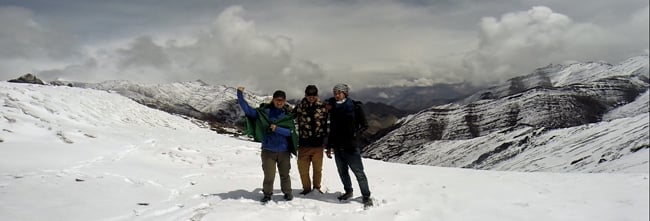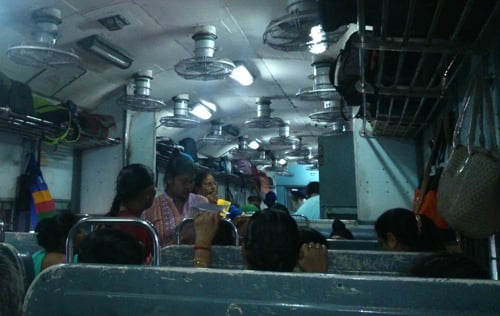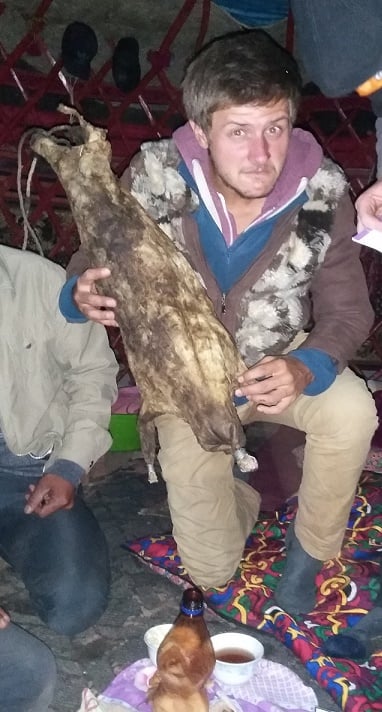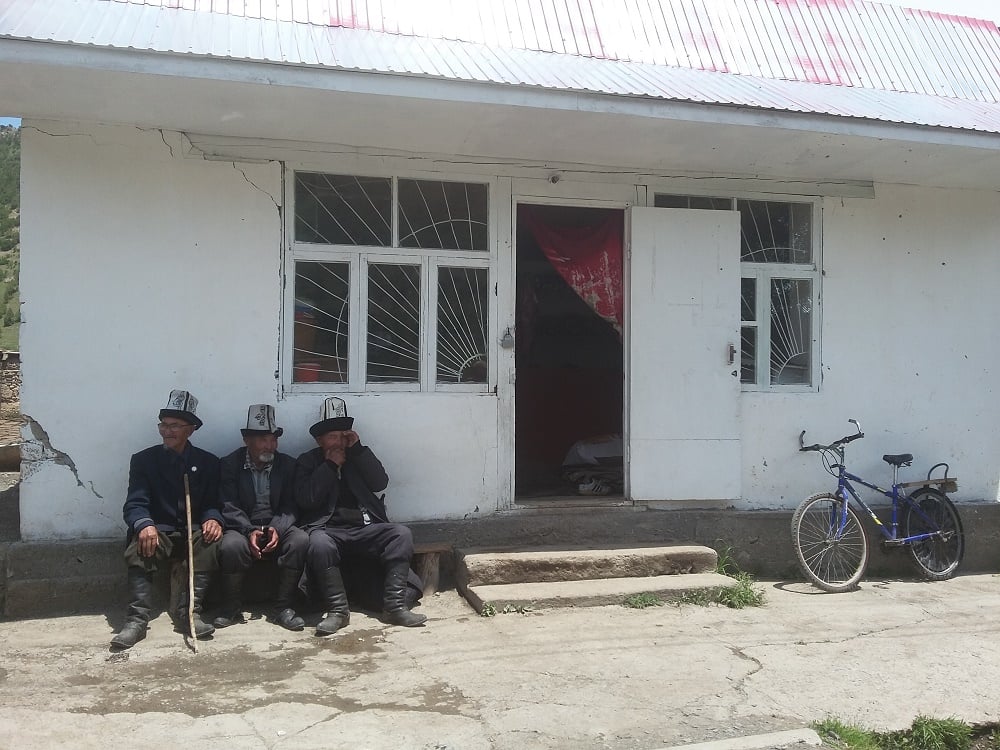Chloé Perdrix writes: India and Kyrgystan - two very different countries, two very different experiences of primary care.
 Photo - Himalaya, 5200m high!
Photo - Himalaya, 5200m high!
My name is Chloé Perdrix, I’m a 27 year old French GP resident,. I am taking a sabbatical year travelling around Asia. In order to stay in touch with the medical network, I intend to meet general practitioners during this journey. I proposed to WONCA and the Vasco da Gama Movement (VdGM), to write an article each two months in order to share my discoveries, my questions and my reflections about this experience. This is my sixth story.. to see others click here.
India
India's Family medicine residency and health system compared to France. In New Dehli, I had the pleasure to present the Family Medicine (FM) residency organization in France to some Indian residents. Then, we compared my country’s family residency and health system with the Indian ones.
I learned that there is no public health insurance in India. All health expenses are chargeable to patients. Private health insurances do exist.
In France, it is different. The French system of Social Security is financed largely by contributions based on the wages of employees. (5) These contributions are managed by the « Sécurité sociale » (French public health insurance) which distributes this money to partially refund people who need health care. French health system is based on solidarity - for example, the public insurance refunds 70% of the price of a GP consultation. What is left is chargeable to the patient who often contributes to an additional private insurance to be totally refunded. (a GP consultation is 23 euros in France).

I also learned that Family Medicine residency in India is not mandatory, but has been available since 2009. The residency lasts two years and ends with a very difficult exam which evaluates students on a very large number of competencies which go beyond family medicine ones. For example, they have to learn how to perform an appendicectomy (appendectomy).
Photo - cows are holy in India, so they can stay in the middle of a road without being scared for their life.
But studying for this difficult exam doesn’t seem to be enough for residents to feel ready to work in primary care after finishing their studies. Indeed, according to what I was told during this meeting, a lot of them prefer working one or two more years in hospitals to improve their practice.
In France, residents feel the same at the end of their studies – they fight to change rotation schedule so that as Family Medicine residents they feel ready to work as General Practitioners at the end of their studies. To achieve this aim, we asked for more rotations in primary care centres. Indeed, our education and training is mostly in hospital based. We only have six mandatory months in general practitioners’ clinics during our three years of specialisation training.
In India, I think this problem is the same. FM Residents don’t have any mandatory rotations in primary care centres during their residency. How can they feel ready to be a general practitioner if they have never faced real primary care situations?
During this meeting, I met Dr Raman Kumar, Chairman of Academy of Family Physicians of India (AFPI) and WONCA World executive member, and Dr Bhavna Matta, President of The Spice Route Movement for young doctors in the WONCA South Asia Region. I am always very honoured to meet and spend time with such active general practitioners. I thank them again for their availability and hope that Bhavna passed her exam successfully.
Indian castes and human rights
In India, Romain and I noticed with sadness that caste discrimination still remains despite of government efforts.
Dalit, meaning "oppressed" in Marathi, is the self-chosen political name of the castes who were formerly considered "untouchable" according to the Hindu varna system. (1) Their official name is « Scheduled Castes ».
Dalits are ‘outcastes’ falling outside the traditional four-fold caste system consisting of the hereditary Brahmin, Kshatriya, Vaishya, and Shudra classes. Indian culture still considers them as impure. They are therefore physically and socially excluded and isolated from the rest of Indian society.
During our journey in India, we witnessed men, women and children who were extremely under-nourished, begging on the street, collecting empty bottles of water to sell them. One day, in the train I saw one person being insulted by another from an upper caste because he dared to touch him. The most difficult thing for me was to walk on the street and see dozens lying on the ground like animals, without any covers or pillows. Just laying, sometimes in the middle of the street, and trying to survive.
Dalits represent a community of 170 millions of people in India, constituting 17% of the population. Dalits regularly face discrimination and violence which prevent them from enjoying the basic human rights and dignity.(2)
Discrimination remains in things like education, healthcare or politics. According to a survey undertaken in 565 villages in 11 major states of India led by « National campaign on Dalit human rights », medical field workers do not visit 65% of Dalit settlements, 47% of Dalits are not allowed to enter into ration depots.
In a large number of state schools, Dalit students are requested to sit in the back of the classroom, and are forbidden from touching mid-day meals. They are required to sit separately at lunch or are required to eat with specially marked plates. (1)
To finish this section on a positive note, the Indian government, since its independence in 1947, has provided jobs and educational opportunities for Dalits.

To prevent harassment, assault, discrimination and other criminal acts on scheduled castes and scheduled tribes, the Indian government also enacted the Prevention of Atrocity (POA) act on March 31, 1995. The Act denoted specific crimes against Scheduled Castes and Scheduled Tribes as "atrocities" and created corresponding punishments.(3) Furthermore, the 17th Article of the 3rd part of Indian constitution abolished untouchability. (4)
Photo: on a train in India
But there is still a long way to go for these people to get basic human rights, as this discrimination towards them has existed for many centuries.
If you want to know more about this population and its story, read the links in the bibliography.
Kyrgystan and its national drinks
Our primary care experience in Kyrgystan was almost all about traditional medicine and national drinks.

We discovered «
Kymys», which is alcoholised horse milk fermented in a sheep skin. (see picture of Romain, my brother, carrying this recipe). The taste is very special but we had to get used of drinking it because all the Kyrgyz people we met offered us several cups of it.
Photo - Romain carrying a sheep skin where Kymys ferments several days
Kymys is known to be good for digestion (ulcer prevention), blood, and fertility.
We also discovered «
Maksym», named «
Jarma» in the Naryn Region and «Shoro» in the Bishkek region. It is a drink based on wheat, water and oil, all fermented together for several days before being drunk. It helps digestion, has good nutritional value, and prevents blood conditions such as anaemia.
Finally, there is vodka, imported due to the Russian influence (Kyrgystan used to be a Russian colony, until its independence in 1991). Of course, I won’t advertise vodka’s health qualities because it would be against my medical ethics. ;)
Some Kyrgyst people drink it from the morning to the evening to give them strength, and to help them to work in the cold mountains. We can imagine the health consequences about that …
Nevertheless, thanks to vodka and the kyrgyst legendary hospitality, we made good friends like Altynbek, Timur, Jourzu, Nadirbek, Nyrlan and Tilek. And I also had a lot of marriage proposals (which I politely declined)!!
 Photo - Yourts and landscape in Kyrgystan
Photo - Yourts and landscape in Kyrgystan
Kyrgystan is a very beautiful country, with almost universally, a rural life. Landscapes are made of mountains covered by grass, lakes, horses and yourts.

Kyrgyz people are nomads and practice mostly the Muslim religion. Religious practices are however adapted to fit with the nomadic way of life.
Photo - Kyrkyz people
And last but not least, this is the only country where we could drink water directly from the river without needing any purification! This is so rare!
Our stay in Kyrgystan was a real breath of fresh air!
See you next time for my last article about Mongolia and Russia!
And hope to meet some of you to the VdGM preconference and the WONCA Europe conference in Istanbul in October!
My best regards,
Chloé Perdrix
Bibliography :
1. WIKIPEDIA. Social security in France. 2015.
2. Who are Dalits? & What is Untouchability? — [Internet]. [accessed 9 July 2015]. Available at:
http://www.ncdhr.org.in/dalits-untouchability/
3. Dalit [Internet]. Wikipedia, the free encyclopedia. 2015 [accessed 9 July 2015]. Available at:
https://en.wikipedia.org/w/index.php?title=Dalit&oldid=669977835
4. Scheduled Caste and Scheduled Tribe (Prevention of Atrocities) Act, 1989 [Internet]. Wikipedia, the free encyclopedia. 2015 [accessed 9 July 2015]. Available at:
https://en.wikipedia.org/w/index.php?title=Scheduled_Caste_and_Scheduled_Tribe_(Prevention_of_Atrocities)_Act,_1989&oldid=662110683
5. Constitution of India/Part III - Wikisource, the free online library [Internet]. [accessed 9 July 2015]. Available at:
https://en.wikisource.org/wiki/Constitution_of_India/Part_III